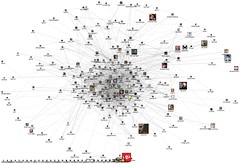Nada Surf taught me all I need to know about being Popular
I wrote this blog for quite a while with the attitude of, “I know know that no one is reading my blog…whoopee!” It’s a very special feeling, being able to post whatever you want and knowing that no one is reading. My first posts were written as part of my independent study of the semantic web/web 2.0 and morphed into posts reviewing games as part of my summer semester video games class. (Hell yeah, I know you’re jealous!) After that the blog languished as I slogged through a project management class that nearly killed me.
Something happened in that semester of project management. I attended GTAC, and the blog turned into something real. I met David Burns who writes The Automated Tester and is doing great things with Selenium and .NET. I was so impressed with how seriously he was involved with his blog. It rubbed off and when I returned, I started thinking of how I could get more serious about my own blog.
I knew that I wanted a new job and not in the city where I was currently residing. I also knew that, unfortunately, my school has negative street credibility outside of Atlanta, GA. If you want to debate me on that point, just ask the people around you, if anyone has heard of Southern Polytechnic State University. You won’t see very many hands.
I decided to blog everything that I did in school. At least I would be able to say, “Hi prospective employer x. I’ve done really great things at school, here they are on my blog.” As part of this whole, getting-more-serious-thing I moved my blog from blogger to wordpress. I still had that “whoopee” feeling that no one was reading my blog. I just thought that people would be reading it later.
I kept working my way through classes, having fun with visualization and writing my thesis. My advisor pushed me to submit my thesis to PNSQC. I was very shocked when it was accepted. I had no idea it would be chosen. I honestly thought I would get the “thanks, but no thanks” email. It made me nervous to think about presenting my work, but I figured I would just stand up in some tiny back, basement room filled with 2 people and stumble through some slides. Then this post of Alan Page’s happened.
At this point, I had read most of Alan’s book, (no small feat considering I had classes requiring lots of attention) and decided it was my FAVE-O-RITE testing book. I can’t tell you how many times I’ve used this book. I actually did a report on Equivalence class partitioning as part of my Formal Methods class. There is no way I can possibly overestimate how important this book was/is for me. In fact, I was unable to post a review of it because the one I wrote was just so Fangirl it even made me want to barf. To have one of the authors saying that he couldn’t wait to see MY presentation at PNSQC was enough to make me hyperventilate. If your favorite tester called you up and told you how much they liked what you were doing, how would you feel?
I felt watched. I couldn’t write for a week. I jumped at every noise and kept turning around because I could feel someone behind me. I was spooked.
Here’s the thing about knowing that people read your blog…you KNOW people are reading your blog. I know that when I go into work tomorrow, my boss, several co-workers and my former neighbor will have read this post.

![Reblog this post [with Zemanta]](http://img.zemanta.com/reblog_e.png?x-id=357d0218-9414-424a-b9ef-d9797b045a8b)


![Reblog this post [with Zemanta]](http://img.zemanta.com/reblog_e.png?x-id=c9201fa2-2022-4718-9ff9-9a696f8029a8)

![Reblog this post [with Zemanta]](http://img.zemanta.com/reblog_e.png?x-id=0d1ea9d2-da40-49b7-9335-7fa173deee5d)

![Reblog this post [with Zemanta]](http://img.zemanta.com/reblog_e.png?x-id=2ab36c33-4c38-47f3-a7ea-dc55cb61092a)
![Reblog this post [with Zemanta]](http://img.zemanta.com/reblog_e.png?x-id=08941a08-18cb-40bf-a78e-ab8f3df70269)








![Reblog this post [with Zemanta]](http://img.zemanta.com/reblog_e.png?x-id=1ea680e6-8d0c-4858-8bba-6fc23e49fd3c)

![Reblog this post [with Zemanta]](http://img.zemanta.com/reblog_e.png?x-id=49c871fd-49c8-4479-9f0e-99ad571c26bf)